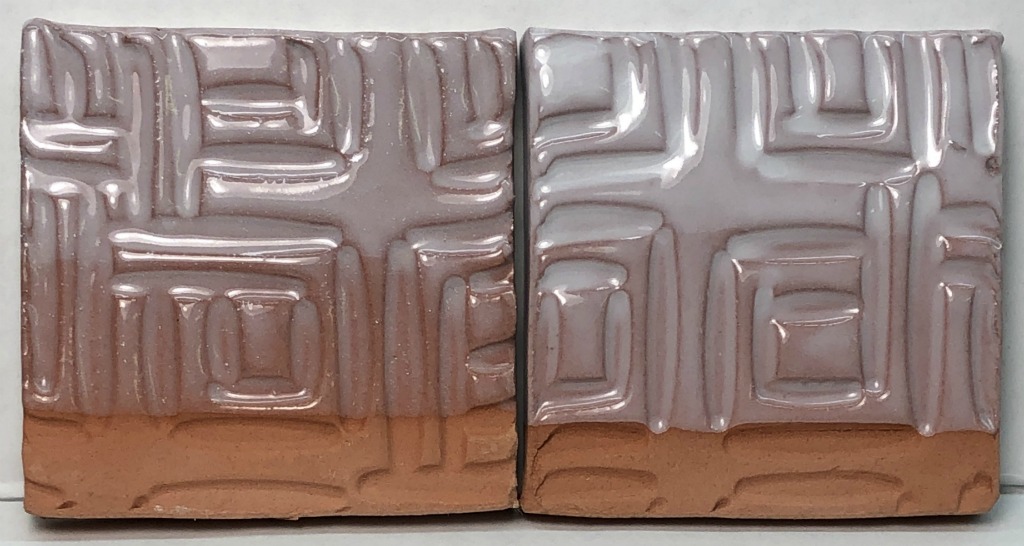Don't waste expensive tin oxide, propeller mix glazes well
This is a insight-live.com/glossary/119">cone 04 glaze on a terra cotta body. Two 300-gram test batches were made. Both have 5% tin oxide added to a base transparent, G1916Q. The one on the left was high-speed propeller-mixed for 10 seconds. That was not enough, small agglomerates appear as tiny white specks floating in the glass. The one on the right was blender mixed for 60 seconds. Now the incredibly small tin particles have been dispersed and can do their job of opacifying the glaze. Would sieving the slurry have worked? No, the particle agglomerates can be far smaller than the openings in an 80-mesh sieve (individual particles could be 1000 times smaller!). The thorough dispersion of the expensive tin oxide particles has real benefit: It enables making an accurate assessment of whether the 5% addition is enough. In this case it isn't, more is needed.
Pages that reference this post in the Digitalfire Reference Library:
Tin Oxide, Blender Mixing, Opacifier, Propeller Mixer, Agglomeration

This post is one of thousands found in the Digitalfire Reference Database. Most are part of a timeline maintained by Tony Hansen. You can search that timeline on the home page of digitalfire.com.
